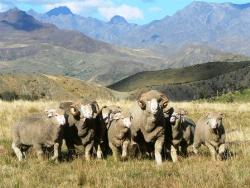- Track your orders
- Save your details for express checkout
Free NZ Shipping
The Early DaysGeorge Rich was the first man to establish a merino stud in New Zealand. He formed the Shakespeare Stud at Mount Eden, Auckland in 1851 with imported merinos from John Aiken in Australia and then later from Siberia. He sold rams and ewes to Melbourne and Sydney in Australia and to Rambouillet in France. Two of George’s rams were bought by the Peppins and used in the foundation of what we now know as the Peppin strain—the most famous strain of merinos in Australia. In the early period many ram breeding properties existed, but it was not until 1894 that the New Zealand Sheepbreeders’ Association was formed and a stud register established to record the breeding of all rams and ewes. A code of rules was compiled and to be eligible for entry in the flock book, it was necessary to have uninterrupted use of purebred sires since 1880. In the first register of 1895, 14 merino studs are recorded with Flock No. 1 showing records back to 1852. The 1895 Flock Book Volume 1 records most of the imported rams that came from the Taylors of Tasmania, one from the Murrays of South Australia and one from Gadegast Saxony in Germany. Among the men who were associated with the early importations and development of the breed were Charles Goulter of Hawkesbury, George Rutherford of Leslie Hills, Watson Shennan of Puketoe, Frank Smith of Waratah and Walter McFarlane of Kaiwara. The 2005 New Zealand Flock Register records 73 merino and polled merino studs mating 21,479 ewes. The oldest is Flaxton founded in 1903 by James Stevenson and is carried on today by his great grandson Ian. Another well known stud founded in 1903 is Moutere run today by Tony Jopp—a great grandson of the founder Andrew Jopp. These men and the studmasters that followed, laid a firm foundation for the New Zealand merino stud industry. |

|
